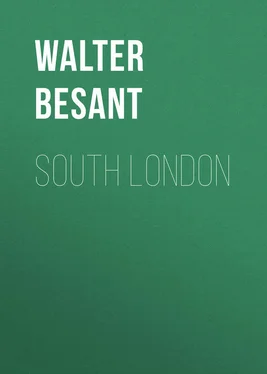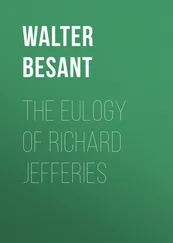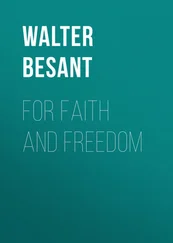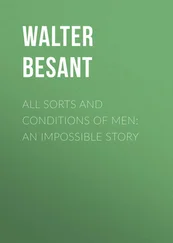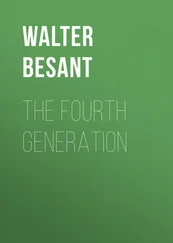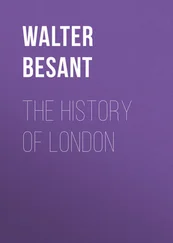Walter Besant - South London
Здесь есть возможность читать онлайн «Walter Besant - South London» — ознакомительный отрывок электронной книги совершенно бесплатно, а после прочтения отрывка купить полную версию. В некоторых случаях можно слушать аудио, скачать через торрент в формате fb2 и присутствует краткое содержание. Жанр: foreign_antique, foreign_prose, на английском языке. Описание произведения, (предисловие) а так же отзывы посетителей доступны на портале библиотеки ЛибКат.
- Название:South London
- Автор:
- Жанр:
- Год:неизвестен
- ISBN:нет данных
- Рейтинг книги:3 / 5. Голосов: 1
-
Избранное:Добавить в избранное
- Отзывы:
-
Ваша оценка:
- 60
- 1
- 2
- 3
- 4
- 5
South London: краткое содержание, описание и аннотация
Предлагаем к чтению аннотацию, описание, краткое содержание или предисловие (зависит от того, что написал сам автор книги «South London»). Если вы не нашли необходимую информацию о книге — напишите в комментариях, мы постараемся отыскать её.
South London — читать онлайн ознакомительный отрывок
Ниже представлен текст книги, разбитый по страницам. Система сохранения места последней прочитанной страницы, позволяет с удобством читать онлайн бесплатно книгу «South London», без необходимости каждый раз заново искать на чём Вы остановились. Поставьте закладку, и сможете в любой момент перейти на страницу, на которой закончили чтение.
Интервал:
Закладка:
Item. Whereas I have no worldly goods with which to do the Queen's Grace, my dearest daughter, a pleasure, neither to reward any of my children, according to my heart and mind, I beseech God Almighty to bless her Grace with all her noble Issue, and, with as good a heart and mind as may be, I give her Grace aforesaid my blessing and all the aforesaid my children.
In this chapter it has been my endeavour to restore an ecclesiastical foundation which has somehow dropped out of history and become no more than a name. If this were a history of South London it would be necessary to devote an equal space to other houses; to the churches and to the two ancient hospitals 'Le Loke' and St. Thomas's. It is impossible, even in these narrow limits, to speak of the religious foundations of South London without mention of the other great House, more ancient than that of Bermondsey. Few Americans who visit London leave it without paying a pilgrimage to the venerable and beautiful church which glorifies Southwark. There were great marriages and great functions held in the Church of St. Mary Overy: Gower, that excellent poet whom the professors of literature praise and nobody reads, died and lies buried in this church; it was the church of the playerfolk: here lie buried Edmund Shakespeare, John Fletcher, Philip Massinger, and Philip Henslow. Here lie buried, in that 'sure and certain hope' which the Church allows even to them, the rufflers, 'roreres' and sinners of Bank Side and Maiden Lane; the brawlers and the topers and the strikers of the Bear Garden and the Bull Baiting. Here were tried notable heretics: Hooper and Rogers, and many more, while Gardiner and Bonner thundered and bullied. From this church the martyrs went forth to meet the flames. The people of Southwark needed not to cross the river in order to learn such lessons as the martyrdoms had to teach them. The stake was set up in St. George's Fields, where they could read, mark, learn, and inwardly digest the undesigned teaching of Bonner and his friends.
It is the custom of historians to point to the martyrdom of Cranmer and the Bishops as the chief cause of the overwhelming Protestant reaction. So great was the horror, they say, of the people at the death of the Archbishop, that the whole nation was roused – and so on. For myself I like to think that, as the people would feel now, so, mutatis mutandis , they felt then. Was there any such mighty horror felt in London when Cranmer died in Oxford? Not so much horror, I believe, as when from their own ranks, from their own houses, from their own families, men and women and boys were taken out and led to execution. Violent deaths – by beheading, by hanging, by the flames – were witnessed every day. How many were hanged by Henry VIII.? The deaths of nobles did not touch the people; they looked on unmoved while the most innocent and most holy men in the country – the blameless Carthusians – suffered death as traitors; they looked on at the death of Sir Thomas More; when witches were burned they looked on. It was when they saw their own brothers, sisters, cousins, dragged out and put to death without a cause, that they began to doubt and to question. Nay, I think it was not the manner of death that affected them, because burning was a thing so common: it was the sentence itself passed on honest and godly folk, and the behaviour of the people at their death. Tender women chained to the stake suffered without a groan, only praying loudly till death came; people remembered, they recalled with tears afterwards, how the martyr and his wife and his children knelt on the ground for one last prayer before the stake; they remembered how the sufferer stepped into his place with a smiling face and welcomed the fiery lane that led him to the place where he longed to be: was this, they asked, the courage inspired of God, or of the devil? They remembered how another washed his hands in the mounting and roaring flames; how the clouds parted at the prayer of another, and the smiling sun of heaven shone upon him; and it was even like unto the countenance of the Blessed Lord. The sight and the remembrance of the sufferings of their own folk, not the execution at a distance of an Archbishop and a few Bishops, moved the people and remained with them, and enveloped the Church of Rome with a hatred from which it has not wholly recovered even in these latter days.
The foundation of St. Thomas's Hospital belongs to both the great Houses of Southwark.
It was the general Rule in all religious Houses that there should be a provision for the poor, the sick, and those who were orphans. St. Mary Overy had a hospital adjoining the priory which was an almshouse certainly, and probably an orphanage as well. It was under the care of the Archdeacon of Surrey. Attached to St. Saviour's was an almonry intended for the same purpose. But the Abbey was entirely secluded: it lay far from any highway; there were no houses, except farm buildings for the monastery's labourers; there were no poor, no sick, and no orphans. So that, when the great fire of 1213 destroyed Southwark and crossed the river by the Bridge into London, the monks of St. Saviour's bethought them that to make their almonry useful it would be well to rebuild it half a mile to the west, on the Southwark Causeway. This was done, and the Hospital of St. Mary was united with it, and the new foundation which Bishop Peter de Rupibus most liberally endowed was named after St. Thomas. At first it was not a hospital especially for the sick, as St. Bartholomew's and St. Mary of Spittal. It was a fraternity like St. Catherine's by the Tower, for brethren and sisters under a master, with bedesmen and women, and a school, and an infirmary; but not, as St. Bartholomew's was from the beginning altogether, only a hospital for the sick.
As for the religious life of the place, it was in most respects like that of London. There were no houses for Friars, but the Friars came across the river en quête , 'mumping,' on their begging rounds; and in the taverns were put up boxes for the contributions of the faithful (towards the end these contributions fell off sadly). There was plenty of life and colour in the streets: serving men in bright liveries of the great Houses – the Bishops of Winchester and Rochester, the Abbots of Lewes, Hyde, and Battle – went about their errands; there were Gilds, notably that of St. George, which had their processions and their days: there were crosses and images of saints, at which the passer-by doffed his hat – in the wall of Lambeth Palace was an image of St. Thomas à Becket overlooking the river, to which every waterman and bargee paid reverence.
Some of the punishments of the time were ordered by the Church. There was whipping, but not the terrible murderous flogging of the eighteenth century; there were hangings, but not for everything. Mostly to the credit of the Church, punishment was designed not to crush a man, but to shame him into repentance, and to give him a chance of retrieving his character. A man might be set in the stocks, or put in pillory, and so made to feel the heinousness of his offence. This punishment was like that which is inflicted on a schoolboy: the thing done, the boy is taken back to favour. The eighteenth century branded him, imprisoned him, transported him, made a brute of him, and then hanged him. Did a woman speak despitefully of authority? Presumptuous quean! Set her up in the cage besides the stoulpes of London Bridge, that everyone should see her there and should ask what she had done. After an hour or two take her down; bid her go home and keep henceforth a quiet tongue in her head. This leniency was only for offences moral and against the law. For freedom of thought or doctrine there was Bishop Bonner's better way. And it was a way inhuman, inflexible, unable to forgive.
CHAPTER IV
Интервал:
Закладка:
Похожие книги на «South London»
Представляем Вашему вниманию похожие книги на «South London» списком для выбора. Мы отобрали схожую по названию и смыслу литературу в надежде предоставить читателям больше вариантов отыскать новые, интересные, ещё непрочитанные произведения.
Обсуждение, отзывы о книге «South London» и просто собственные мнения читателей. Оставьте ваши комментарии, напишите, что Вы думаете о произведении, его смысле или главных героях. Укажите что конкретно понравилось, а что нет, и почему Вы так считаете.
